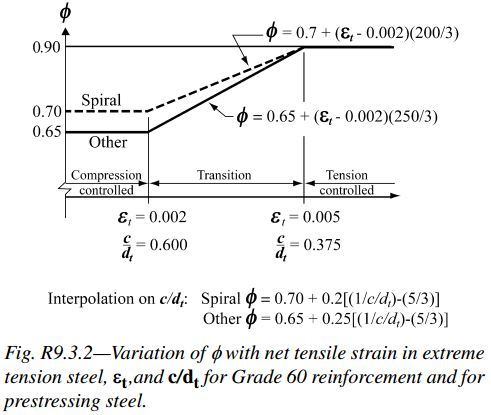geo321
Civil/Environmental
- May 17, 2015
- 85
I was reading some of the topics and thinking of an elementary topic that would like to share with you.
Regarding the flexure in beams or slabs, we usually design our section to be tension controlled (strain in steel should be higher than 0.005) which will guarantee a ductile behavior since reinforcement will yield and have excessive deformations before concrete will break in compression.
However, many engineers like the fact of being conservative so they will always have tendency to increase the required steel area and here comes my question.
Tension controlled means that fs ≥ fy. When As (steel area) will increase, the neutral axis will do the same and fs will decrease. Let us suppose that the section, for a reason or another, has been reduced and the acting moment is requiring a certain amount of steel and is tension controlled (strain in steel is slightly above the required 0.005).
In this particular case, being conservative and adding more than required (or for some deflection purpose) will result in the fact that steel will not yield and we will not get the required ductile behavior since the strain in the steel will be less than 0.5%.
Is there something I am missing ?
thank u
Regarding the flexure in beams or slabs, we usually design our section to be tension controlled (strain in steel should be higher than 0.005) which will guarantee a ductile behavior since reinforcement will yield and have excessive deformations before concrete will break in compression.
However, many engineers like the fact of being conservative so they will always have tendency to increase the required steel area and here comes my question.
Tension controlled means that fs ≥ fy. When As (steel area) will increase, the neutral axis will do the same and fs will decrease. Let us suppose that the section, for a reason or another, has been reduced and the acting moment is requiring a certain amount of steel and is tension controlled (strain in steel is slightly above the required 0.005).
In this particular case, being conservative and adding more than required (or for some deflection purpose) will result in the fact that steel will not yield and we will not get the required ductile behavior since the strain in the steel will be less than 0.5%.
Is there something I am missing ?
thank u

